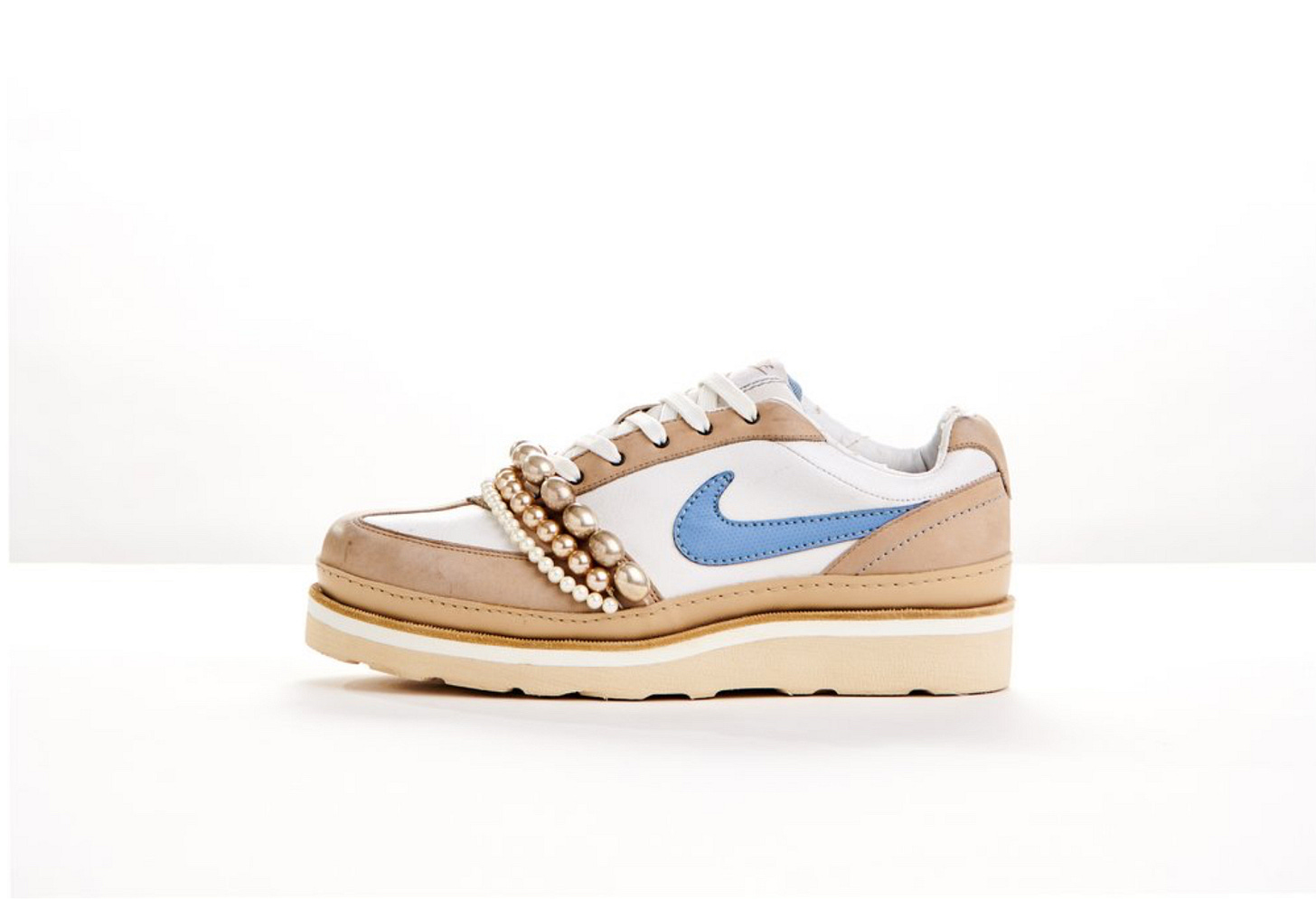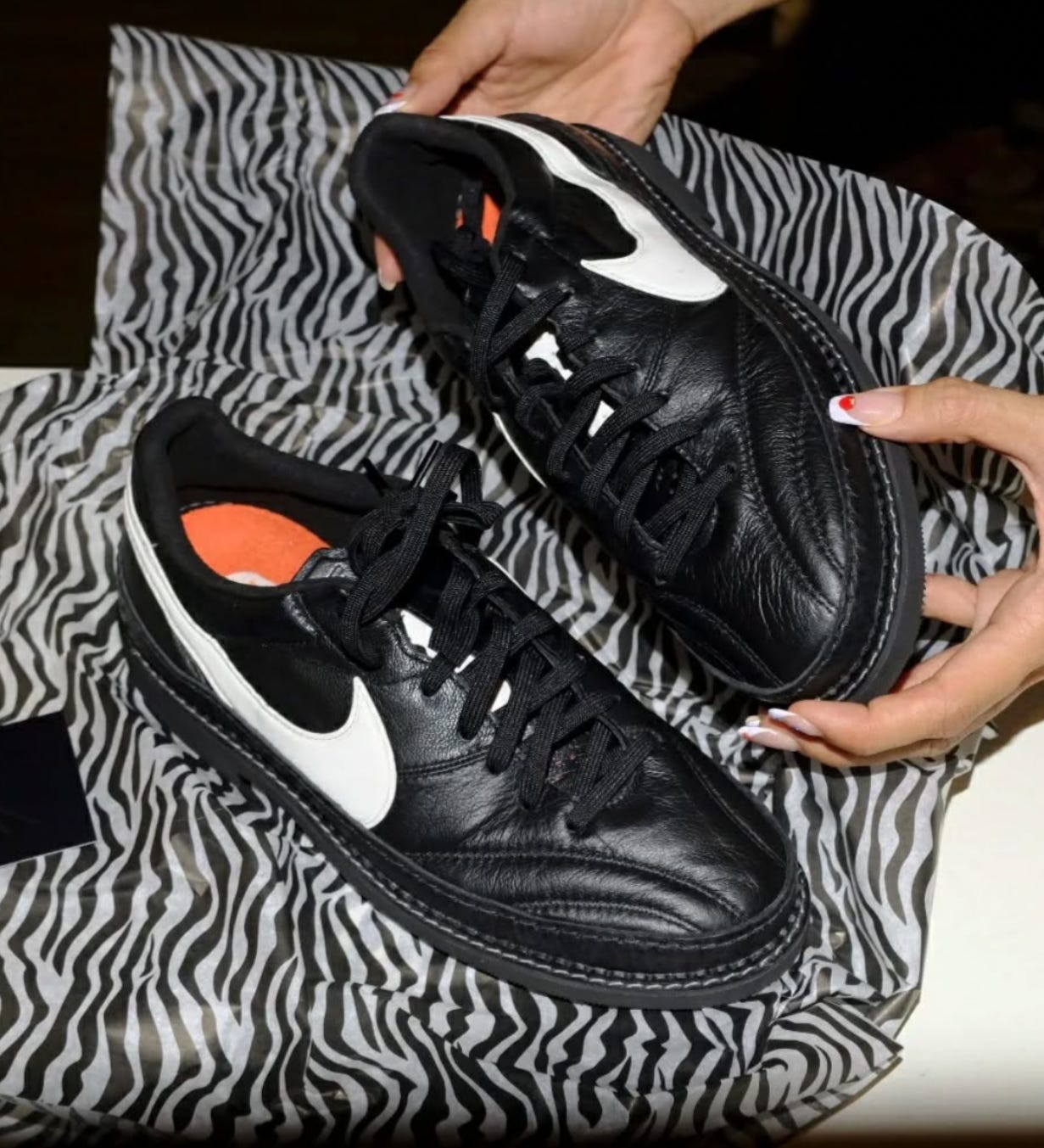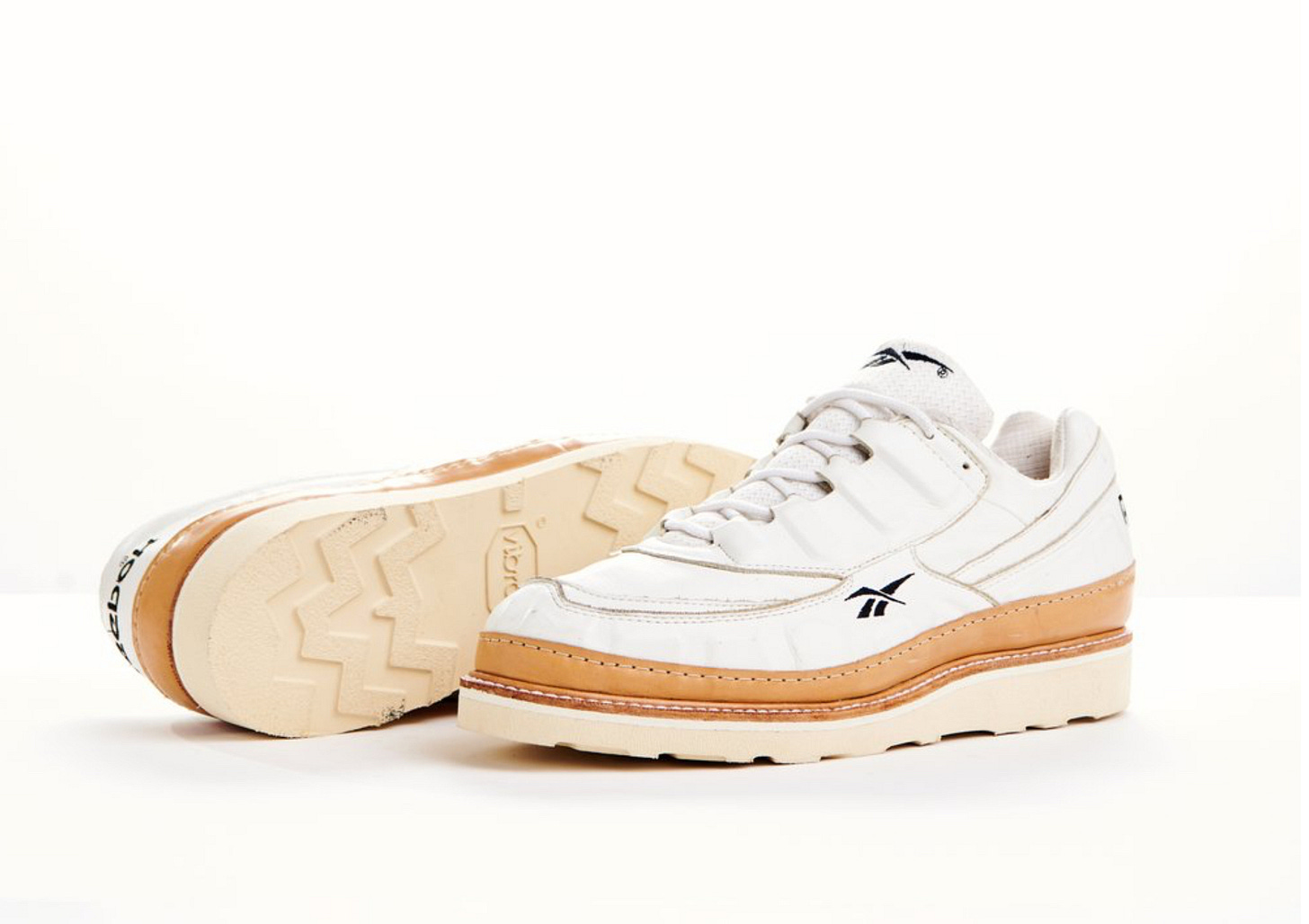Reconstructed: Giving Vintage Sneakers a Second Life
An interview with designer Samuel Falzone
As part of my interview series on founders in the sustainable fashion space (Re.Vert Ventures), I sat down with Samuel Falzone, a multifaceted designer based in New Jersey behind his eponymous shop, to talk about his journey with his Reconstructed Collection of upcycled footwear, the role of repair and sneaker culture. Here is a snippet of the full interview:
Youssef Elbehri:
Sam, let’s start with your background. Who are you, and how did design become your path?
Samuel Falzone:
I’ve always been a maker. As a kid, I’d take apart anything I could — scooters, radios, toys — just to see how they worked. I thought I might be an architect or carpenter, but after working a construction job at 12, I realized that wasn’t for me. I shifted to smaller projects like skate ramps.
Skateboarding played a big role. I’d tear through shoes constantly but could never throw them away — each pair had memories attached. I guess that was my early connection to footwear design, even if I didn’t realize it at the time.
Y.E.:
What kinds of shoes do you usually work with?
S.F.:
Mostly vintage Nikes from the ’90s — especially ACG models and hiking boots. Many are “deadstock,” meaning they’ve sat in storage for 20 or 30 years. The uppers are fine, but the soles have turned to dust.
I rebuild them using durable Vibram outsoles and traditional construction methods, so they can actually be resoled again in the future.
Y.E.:
That’s rare for sneakers. Why is repairability so important to you?
S.F.:
Most sneakers today are glued, not stitched. They’re designed for performance, not longevity. I wanted to create something that could live multiple lives — like old leather boots that you can keep repairing.
Every pair I make can be resoled. I work closely with a cobbler in New Jersey and with Vibram directly. It took time to find someone open to experimentation, but now it’s a real collaboration.
Y.E.:
Why do you think people stopped repairing their shoes or clothes?
S.F.:
We’ve become careless consumers. Everything’s about convenience — buy, use, toss. Our grandparents valued repair because things were built to last.
I’m trying to bring that mindset back. When you repair something, you deepen your relationship with it. It becomes part of your story.
Y.E.:
Sam, as someone deeply immersed in footwear, do you feel pressure to always wear something that reflects your design values?
S.F.:
Definitely. There’s this unspoken expectation that a footwear designer should always be wearing something interesting. For me, a shoe has to meet a few criteria — it needs to be well-designed, meaningful and personal.
I’ll tell you a funny story. I was at my dentist — a guy who’s known me since I was a kid — and he looks down and says, “What are those? You’re a footwear designer?” I was wearing these completely beat-up Air Force 1s. He caught me off guard. Since that day, I’ve made a rule: if I’m not wearing shoes I designed or worked on, I feel off. They represent me, my craft and how I want to move through the world.
Y.E.:
You work mostly with vintage or deadstock shoes. How do you actually find them?
S.F.:
It’s a mix of thrift stores, online forums and word of mouth. I’ll spend hours on eBay or Grailed searching for specific models, but some of the best finds come from local spots — those random bins or estate sales where no one else is really looking.
Over time, people started reaching out to me directly. They’d say, “Hey, I’ve got this pair from the ‘90s — the sole’s gone, but the upper’s mint.” That’s the perfect starting point for what I do.
Y.E.:
Do you have certain silhouettes or eras you’re always drawn to?
S.F.:
Definitely. I’m obsessed with Nike [All Conditions Gear] ACGs and old hiking shoes — late ‘80s through early 2000s. That era had real experimentation with materials and construction. The designs were technical but weird in the best way.
You can’t find that level of character in most modern releases. When I rebuild those pairs, I try to keep that soul intact — just give it a second life with modern comfort and durability.
Y.E.:
What’s the feeling when you find a great piece — that perfect vintage pair?
S.F.:
It’s like treasure hunting. You’re holding a piece of history, something that’s been forgotten and buried. When I see a pair that’s literally falling apart, I don’t see trash — I see potential.
There’s a magic in bringing it back to life. It’s not just about saving materials — it’s about continuing a story that someone else started years ago.
Y.E.:
Do you ever struggle to source enough shoes or materials for your work?
S.F.:
All the time. That’s part of why every pair is one-of-one — I never know what I’ll find next. Some weeks I’ll come across five incredible pairs; other times, nothing for months.
It forces you to stay flexible as a designer. You learn to work with the material instead of against it — to let the limitations shape the creativity.
Y.E.:
Last question — what advice would you give to aspiring designers and entrepreneurs?
S.F.:
Just start. Don’t let ideas become intimidating. Take small, digestible steps and be honest with yourself. If you say you’re going to do something, do it. You owe that to yourself.
No one will push you harder than you can push yourself. Follow what excites you, even if it doesn’t make perfect sense yet. Curiosity is the best teacher.
Talking with Sam reminded me why craftsmanship still matters — not as nostalgia, but as resistance. His shoes aren’t just objects; they’re arguments for patience, intention and integrity in a world obsessed with convenience.
In an industry that rewards speed and volume, Sam’s work is a quiet rebellion — one built stitch by stitch, sole by sole. Reconstructed isn’t just about repairing shoes. It’s about repairing our relationship with the things we own. Check out the rest of Sam’s design work here.
Check out the full interview with Samuel, and subscribe for more resources for exploring all things secondhand.
Photo Courtesy: Samuel Falzone








